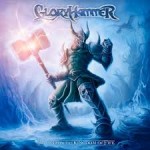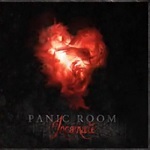 David Taylor’s Bridport Town
David Taylor’s Bridport Town
Despite being a long-standing science fiction fan, I have trouble seeing the point of knowing the finer points of Dr Who or Star Trek continuity, let alone that of the endlessly retconned comic-book superhero universes. Such things are the meat and drink of some corners of geekdom, but I find that obscure knowledge of media franchises does nothing for me at all.
After all, when the actual creators don’t give the appearance of caring two hoots about continuity, why on Earth should I care?
On the other hand, historical research for a model railway can be a fascinating subject, and for me that fulfils the interest in obscure minutia. For example I’ve recently seen long and detailed discussions on which Southern Railway Bulleid coaches ended up on the Western Region in the 1960s, and what liveries they were painted in. Someone even found photo of a brake composite painted maroon taken at Bere Alston in Devon, to settle discussions over whether such things existed.
And with trains, what is and isn’t canon is pretty unambiguous, much as some people would probably love to retcon Dr Beeching out of existence.
It struck me that in SF&F terms, railway modelling is a kind of cross between fanfic and cosplay. There’s an element of secondary creation in designing a layout, especially an exhibition-standard one, and there an obvious craft in building it. And operating it in public becomes a form of performance art.
There are plenty of layouts which attempt to reproduce a specific location in miniature, sometimes with compromises due to space; Jim Smith-Wright’s ambitious finescale model of Birmingham New Street is a great example.
But there are plenty of others that evoke a sense of time and place without being based any actual real-world location. There are layouts based on lines proposed during the in the 19th century railway mania but never actually built. And there are those based on an actual route, but with a fictional station, frequently an amalgam of features from several real stations in the chosen area.
To be convincing they have to follow the distinctive architecture and operational practices of whatever railway company they’re based on, feature the rolling stock that ran in that part of the country in whatever time period the layout is set, and of course capture the essence of the landscape through which the railway runs. If you think of it that way, it’s has an awful lot in common with fanfic’s knowledge of setting and characters.
A few examples to illustrate what I mean.

This layout is a good example of a ficticious station on a real route. The Highland Railway architecture, the wild, barren landscapes and the class 26 locomotives immediately identify it as the Far North lines in Scotland in the 1970s, as surely as Imperial Stormtroopers denote Star Wars.

Similarly, Stoney Lane immediately screams “South London”. Every building on this layout is based on a real south London building, and the layout’s builder has even drunk a pint in each of the layout’s four pubs.

Bridport Town is an excellent example of model of a “might-have-been”. There never were any 2′ gauge railways in Dorset, and this ficticious railway is created out of the whole cloth. Even some of the locomotives are based on drawings of locomotives proposed but never built. But with non-railway structures based on real-life buildings in the area, the whole thing has a ring of authenticity about it.
So, does the fanfic comparison hold any water?
 Yesterday I was horrified to see a Promoted Tweet for a PUA (Pick Up Artist) promoting their hideous rapey misogynistic subculture. It’s not often I swear on Twitter, but I’m told my reaction was more than justified.
Yesterday I was horrified to see a Promoted Tweet for a PUA (Pick Up Artist) promoting their hideous rapey misogynistic subculture. It’s not often I swear on Twitter, but I’m told my reaction was more than justified.


 A concept album describing how the bold hero Angus McFife saved the city of Dundee from the evil sorcerer Zargothrax and his horde of undead unicorns?
A concept album describing how the bold hero Angus McFife saved the city of Dundee from the evil sorcerer Zargothrax and his horde of undead unicorns?



 Panic Room had something of a troubled 2013. Several years hard work paid off with a growing reputation and audience for their powerful and sophisticated mix of rock, folk, jazz and metal. Then their year began with the departure of the lead guitarist, founder member Paul Davies. While Morpheus Rising’s Pete Harwood did a sterling job standing in on their already-booked tour, his commitments to his own band ruled out any longer-term involvement. So they initially announced that they’d be writing their fourth album as a four-piece. Then around the time the band were ready to enter the studio they announced the recruitment of Adam O’Sullivan, bringing the band back up to full strength.
Panic Room had something of a troubled 2013. Several years hard work paid off with a growing reputation and audience for their powerful and sophisticated mix of rock, folk, jazz and metal. Then their year began with the departure of the lead guitarist, founder member Paul Davies. While Morpheus Rising’s Pete Harwood did a sterling job standing in on their already-booked tour, his commitments to his own band ruled out any longer-term involvement. So they initially announced that they’d be writing their fourth album as a four-piece. Then around the time the band were ready to enter the studio they announced the recruitment of Adam O’Sullivan, bringing the band back up to full strength.